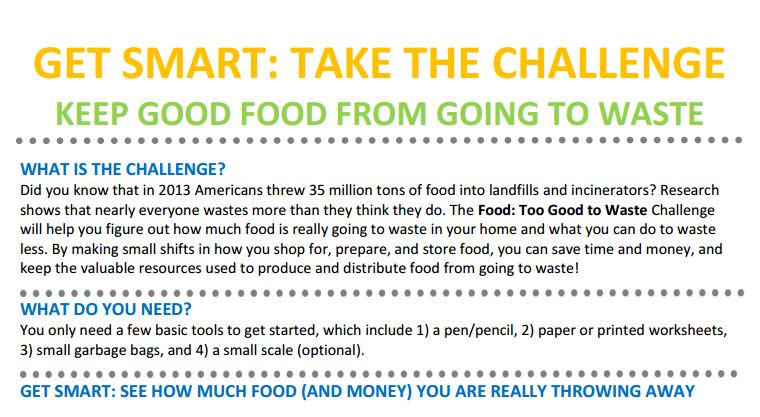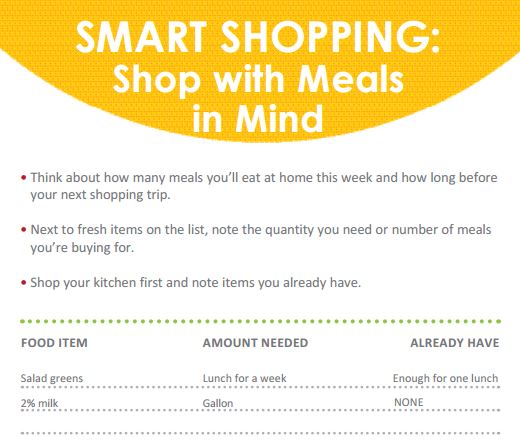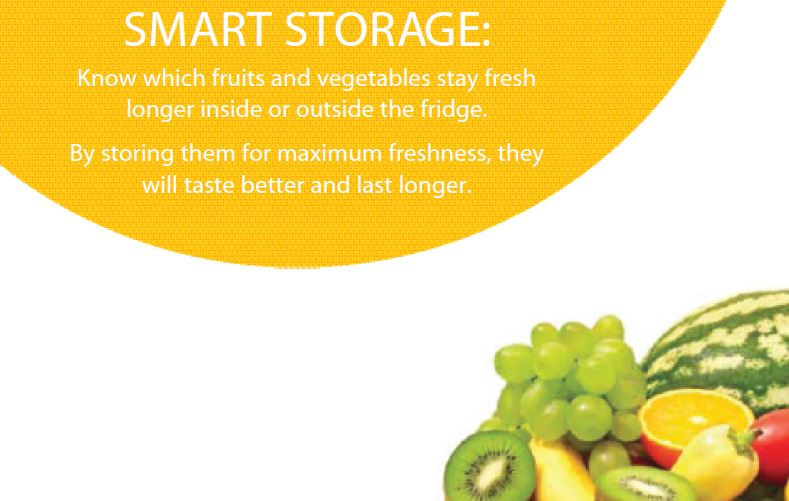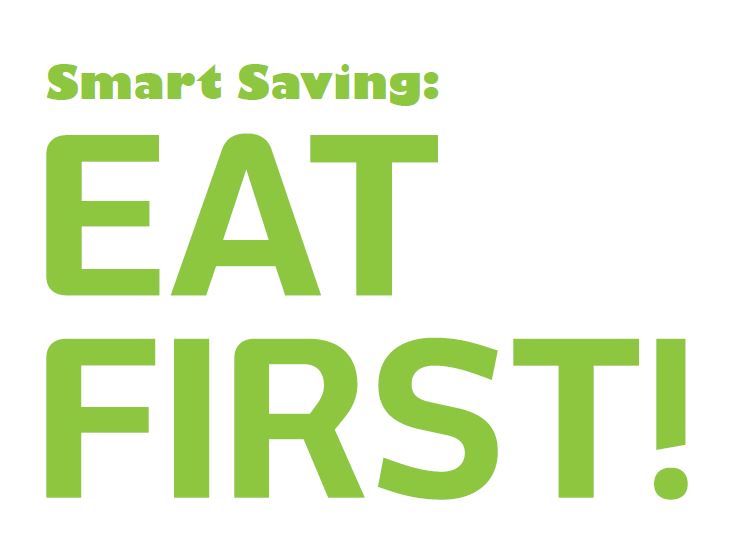Get Smart: See how much food (and money!) you’re really throwing away
The first step to reducing food waste and creating lasting awareness is to actually measure how much food you’re throwing away.
- Take the Challenge: Keep good food from going to waste!
Smart Shopping: Buy What You Need
By simply making a list with weekly meals in mind, you can save money, time, and eat healthier food. If you buy no more than what you expect to use, you will be more likely to keep it fresh and use it all.
- Make your shopping list based on how many meals you’ll eat at home and the timing of your next shopping trip. Will you eat out this week? Be realistic. Download this handy shopping list tool.
Helpful Tips
- Shop your fridge and cupboards first to avoid buying food you already have.
- Include quantities on your shopping list to avoid overbuying. For fresh items, note how many meals you’ll make with each. For example: salad greens - enough for two lunches.
- Buy fresh ingredients in smaller quantities more often so you waste less while enjoying fresher ingredients.
- Choose loose fruit and vegetables over pre-packaged produce to better control the quantity you need and to ensure fresher ingredients.
- Keep a running list of meals that your household already enjoys. That way, you can easily choose a meal to prepare.
- Don’t think you have time for meal planning and lists? Try these free mobile apps and web-based tools to make it easier.
Smart Storage: Keep fruits and vegetables fresh
We waste fresh fruits and vegetable most often. We usually overbuy or don’t use them in time. Store fruits and vegetables for maximum freshness; they’ll taste better and last longer, helping you to eat more of them. Storage tips:
- Learn which fruits and vegetables stay fresh longer inside or outside the fridge.
- Use online storage guides for all types of food.
- Try using storage bags or containers designed to help extend the life of your produce.
- Use your freezer – if you can’t eat a food in time, you can often freeze it for later.
Helpful tips
- Separate very ripe fruit from fruit that isn’t as ripe. Many fruits give off natural gases as they ripen, making other produce spoil faster.
- Store bananas, apples, and tomatoes separately, and store fruits and vegetables in different bins. Wash berries just before eating to prevent mold.
- If you like your fruit at room temperature, take what you’ll eat for the day out of the fridge in the morning.
- Have produce that’s past its prime? It may still be fine for cooking. Think soups, sauces, pies or smoothies.
See the storage guide.
Smart Prep: Prep now, eat later
Prepare perishable foods soon after shopping. It will be easier to whip up meals later in the week, saving time, effort, and money.
Helpful Tips
- When you get home from the store, take the time to wash, dry, chop, dice, slice, and place your fresh food items in clear storage containers for snacks and easy cooking.
- Befriend your freezer and visit it often. Freeze food such as bread, sliced fruit, or meat that you know you won’t be able to eat in time.
- Cut your time in the kitchen by preparing and freezing meals ahead of time.
- Prepare and cook perishable items, then freeze them for use throughout the month. For example, bake and freeze chicken breasts or fry and freeze taco meat.
Smart Saving: Eat what you buy
Be mindful of old ingredients and leftovers you need to use up. You’ll waste less and may even find a new favorite dish.
- Move food that’s likely to spoil soon to the front of a shelf or designated “eat now” area. Download the Eat First prompt.
Helpful Tips
- Casseroles, frittatas, soups, and smoothies are great ways to use leftovers and odds and ends. Search for websites that provide suggestions for using leftover ingredients.
- Make a list each week of what needs to be used up and plan upcoming meals around it.
- Are you likely to have leftovers from any of your meals? Plan an “eat the leftovers” night each week.
- Share food you won’t get around to eating with friends or neighbors before heading out of town.
- Still Tasty: Learn the difference between “sell-by,” “use-by,” “best-by,” and expiration dates.




